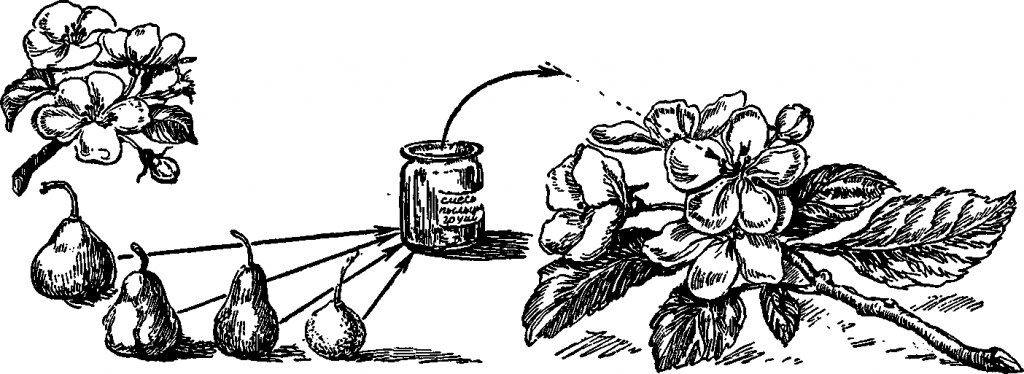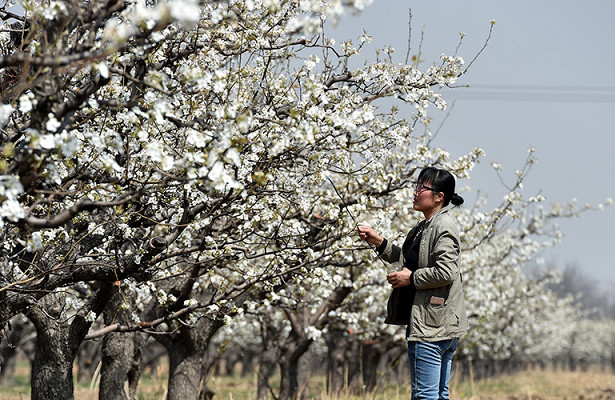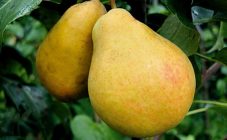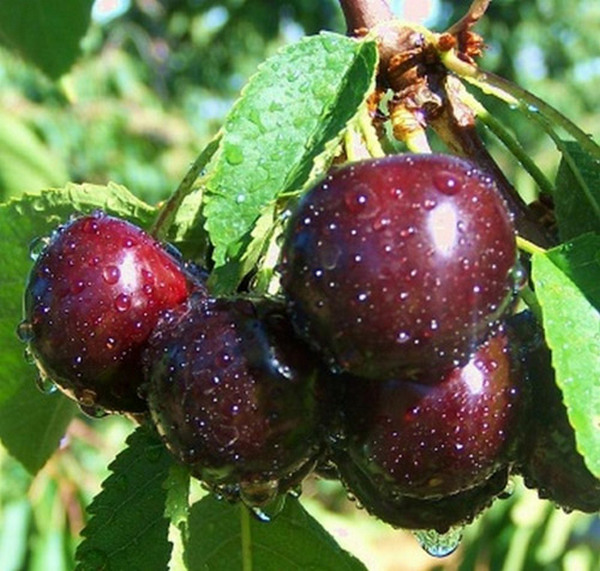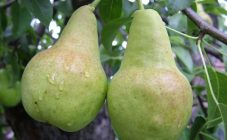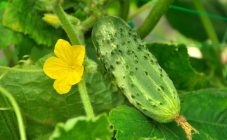Content:
Most varieties of pear trees are self-fertile, that is, pollination cannot occur on its own. Even the few cultivars that are considered self-pollinating show a low percentage of fruit set. If at the time of flowering weather conditions are favorable, bees from neighboring trees carry pollen to flowers, but is it worth counting on the favor of nature? This article tells about how a pear is pollinated, whether a pear needs a pollinator, how to pollinate a pear if it is alone.
How to pollinate a pear
Every gardener is familiar with this picture: the trees bloom profusely, delight the eye and promise a rich harvest, but it is not: either the rains wash away the pollen, then it got colder, then the bees did not arrive. Not everyone knows that for the successful cultivation of pears, it is necessary to provide them with cross-pollination, then dependence on the vagaries of the weather will have less effect on the yield. The best method is to plant both pollinator and pollinated varieties at the same time. There are also inter-pollinated, when trees are pollinators for each other. An important condition for the selection of varieties is the coincidence of flowering dates.
Better yet, plant two pollinators at once in case one of them doesn't bloom.
But what if there is only one pear on the site, the garden has already been planted, and there is nowhere to plant pollinators? Then they resort to artificial pollination. In large industrial gardens, pollen is sprayed using a spray method. In the country, this procedure can be carried out with a brush or cotton swab. The pollen sticks to a soft, rough surface and then is applied to other flowers. Thus, it can be transferred from flower to flower of the same tree, but then a high percentage of pollination will not work. It is best to transfer pollen from other pear varieties from a nearby garden, if possible, since a mixture of pollen from different trees is especially effective.
Can an apple tree pollinate a pear? Yes, these cultures are quite compatible and can always be mutually pollinated.
Pear varieties that pollinate each other
There are a number of conditions for the possibility of pollination of one variety by another:
- flowering of both varieties should occur at the same time;
- the pollinator must produce abundant pollen;
- both trees should bloom annually;
- trees should not be cross-sterile;
- development phases must coincide in time;
- the trees must have the same durability.
There are many varieties of pears recommended for cross-pollination. The most common ones are:
| Pears | Varieties - pollinators |
|---|---|
| Autumn bergamot | Seedless, Tonkovotka |
| Bere Bosc | Williams, Clapp's Favorite, Saint Germain |
| Williams | Clapp's favorite, Autumn decan |
| Curé | Winter decanter, autumn decanter, Bon Louise |
| Clapp's favorite | Bere Beyk, Bon Louise, Bere Bosk |
| Irista | Nika, Extravaganza, Dessert Rossoshanskaya |
Recently, the autumn pear variety Irista has gained popularity. It is frost-hardy and fruitful, the fruits are large, have a wonderful nutmeg taste and delicate aroma. The disadvantages are the need for a pollinator. For Irist's pear, they are shown in the table above.
Such varieties as Kure, Nart, Bere Dil are generally not capable of pollination. They do not even produce their own pollen every year, but in general they are fruitful, and their fruits have a wonderful taste. Therefore, they need a plant - a pollen donor.
Self-pollinating hybrids bear fruit worse in the absence of a pollinator. The reason is that self-fertility can change over time and even disappear; this indicator also depends on climatic conditions and the age of the tree. Self-fertile can be considered the tree on which, without cross-pollination, the ovary is formed on 15-40% of the flowers. If this criterion is 0.4%, the tree is self-fertile.
Compliance with such conditions as:
- sufficient sunlight, so when planting, you should choose a place away from tall trees and buildings;
- favorable soil conditions;
- crown formation, taking into account all the characteristics of the variety;
- protection from diseases and harmful insects.
The most common varieties of self-pollinating pears are:
- Rogneda - a productive self-fertile variety that can also serve as a pollinator;
- Banquet - frost-resistant, self-fertile, with very tasty fruits;
- ChizhovskayaIs an excellent pollinator, but also produces crops alone. The disadvantage is poor winter hardiness. Recommended for southern areas, in cooler climates needs shelter for the winter;
- Lada- a frost-resistant early maturing variety and an excellent ability to pollinate independently.
Tips and tricks for pollination of pears
The pear tree is influenced by nearby plants. The proximity to the apple tree, mountain ash will have a beneficial effect, and the spruce, thuja, and pine trees growing nearby will also benefit. From garden crops, they are compatible with peppers and tomatoes.
Peaches, cherries, plums, nuts are unwanted neighbors of a pear. It is also contraindicated to grow potatoes near them. Neighborhood with raspberry and currant bushes can also have a negative effect, since pests that often infect them can harm the pear.
The quality of cross-pollination is influenced by the distance at which trees are planted from each other. Since the pear tree does not like replanting, the recommended distance must be maintained immediately upon planting. It is chosen depending on the size of the crown of an adult tree, in most cases it will be from 5 to 7 m between rows and 3-4 m in a row. For dwarf varieties, the spacing between trees can be from 1 to 1.5 m. Pollinated trees and pollinators should not grow far apart, therefore a maximum distance of about 15 m is recommended.
Artificial pollination of a pear is a laborious task, especially if the tree is large. But it turns out there is no need to manually transfer pollen to each flower. It is enough to pollinate the central flower in the outlet, as a rule, the rest of the flowers still fall off. If this did not happen, and the whole brush was tied, then it is better to thin it out, leaving no more than 2 ovaries, otherwise the fruits will be small and may have an irregular ugly shape and bad taste.
Attracting insects will also not be superfluous, this can be done by spraying sugar or honey syrup over a tree in color at a concentration of 2 tbsp. tablespoons of sugar or honey per 1 liter of water. You can also place in the crown a bouquet of flowering twigs cut from another tree, placed in a bowl of water.
A very good way is to graft a branch of a different variety. Some gardeners grow 2, 3 or even 4 different varieties on the same tree, which are successfully mutually pollinated.
Many gardeners are concerned about the question: if there are different varieties of pears, will cross-pollination occur and will it not negatively affect the quality of the variety? Experts answer that cross-pollination occurs, but it can only harm those who want to grow a tree from seeds. This is usually done by breeders when developing new varieties.Already growing trees do not change their varietal qualities due to pollination with pollen from other compatible plants. A pear, pollinating from an apple tree, will not turn into an apple tree, so the amateur gardener does not need to be afraid of this.
Now, knowing everything about the artificial and natural pollination of pears, the gardener will no longer have problems with growing and getting the long-awaited harvest!
